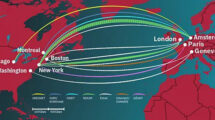The WiFi infrastructure at CERN has more than 5,000 access points and supports thousands of users every day; staff, visitors, students and attendees at conferences or other events. User numbers will increase even more after the opening of the CERN Science Gateway, inaugurated on the 7th of October 2023, which will welcome thousands of visitors and science lovers per year. Ensuring that our WiFi infrastructure delivers our users with a high quality of service is therefore essential but also a complex task due to the variety and number of devices that connect each day. Fortunately, GÉANT’s WiFiMon helps us gather the information we need.
WiFiMon gathers crowdsourced information from user devices such as mobile phones, laptops and tablets with Software Probes (WSPs) as well as data and metrics regarding the network performance at defined points on the CERN site with Hardware Probes (WHPs). Wi-Fi network administrators can use a simple web page to configure custom tests and measurements to be carried out by the WSPs. Figure 1 shows crowdsourced measurements supplied by 4 clients on CERN’s WiFi network.

Figure 1: Crowdsourced measurements for 4 clients of CERN’s Wi-Fi network.
To collect data with WHPs, a network administrator needs to place devices at the specific points of interest. These can be very simple devices as the computational load is low; basic Intel NUC devices are used at CERN and we collect network performance data and metrics automatically every 5 minutes. Figure 2 shows the data collected by WHPs at four key points on the CERN site.

Figure 2: WHPs measurements in 4 locations at CERN.
The measurements provided by the WHPs have been of great help to us to identify and resolve a problem with the WiFi network in one of our buildings. As can be seen in figure 3, the packet loss rates and RTT measured by device wifimon-3 are significantly worse than for the other probes. Once WiFiMon highlighted the problem it was simple to fix. Without WiFiMon, though, users would have continued suffering from poor Wi-Fi performance without us knowing.

Figure 3: WHPs measurements – average number of packets lost and average RTT.
Not only is GEANT’s WiFiMon of great benefit for identifying Wi-Fi performance issues, WiFiMon is easy to deploy. To deploy WiFiMon, we followed the installation guide available on the GEANT Wiki [1] which describes how to install the two central components. First of all, we install the WAS (the WiFiMon Analysis Server) and the WTS (WiFiMon Test Server). Like the WHPs, these are lightweight applications and a single server can easily support both. The server is using Ubuntu 20.04 LTS as the operating system. In this way, we have both WiFiMon components centrally on the same machine to perform measurements and collect data.
For more information on WiFiMon visit network.geant.org/wifimon/







